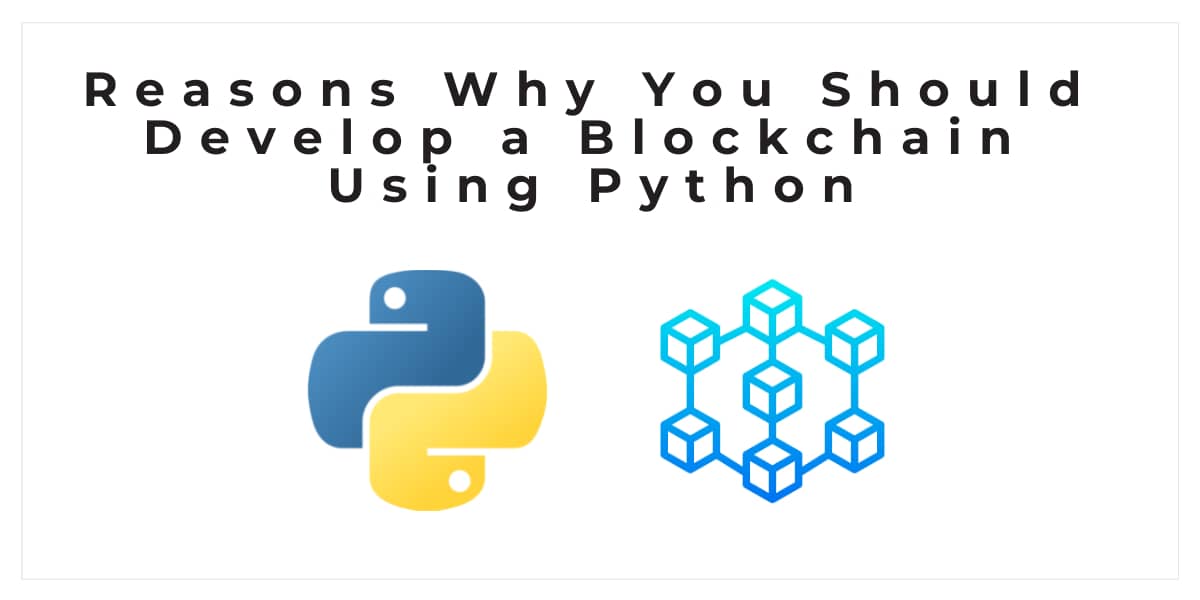Python is a well-known programming language that has made significant advancements, particularly in the development of blockchain technology. Because of its extreme flexibility, Python should be used to create blockchain applications. To fully comprehend the reasons, we will quickly go over what a blockchain is and what the Python programming language includes before diving deeper into the topic at hand. Read on!
What Is a Blockchain?
A blockchain is a decentralized, shared, open, and immutable digital ledger that improves the process of documenting transactions and tracking assets in a business network. This record cannot be changed retroactively without changing all subsequent blocks and the network's consensus.
A blockchain is a type of distributed ledger technology (DLT) made up of expanding lists of data, known as blocks, that are safely connected to one another using cryptography. A distributed ledger is a type of electronic ledger that synchronizes transactions in each electronic ledger by using independent computers, also known as nodes, to record databases, share databases across a network, and record transactions. In a blockchain, blocks are the fundamental data storage units that house transactional information and are encrypted. A blockchain is also a synthesis of three key technologies: cryptographic keys, peer-to-peer networks with shared ledgers, and a computing infrastructure for storing network transactions and records. A blockchain is an indispensable part of any cryptocurrency. Without blockchain technology, cryptocurrencies like Bitcoin and exchanges like NakitCoins would not be possible.
What Is the Python Programming Language?
Python is a high-level, dynamic, interpreted, garbage-collected, general-purpose programming language that supports a number of different programming paradigms including structured, object-oriented, and functional programming. The best Python interpreter for finding bugs and raising exceptions is Python itself. Python is used in many different fields including machine learning, web development, desktop applications, and many more. Furthermore, Python is a very intuitive language that is simple to read and understand thanks to its use of code blocks and self-explanatory syntax. In comparison to other languages, it is a dynamic and open-source language that is simple to learn.
Reasons Python Should Be Used for Blockchain Development
Now that you know what a blockchain is and more about Python, it is time to talk about why Python should be used to create blockchains. Let's look at the reasons now.
Python provides free blockchain packages
Security, performance, and scalability are three crucial factors to keep in mind and take into account when developing blockchain technology of any kind. The security of any newly developed blockchain is extremely important to both the owner and the users. Strong security will help prevent theft and scamming, giving the blockchain an advantage over competing blockchains and providing users with assurance. Another essential component that every blockchain must address is scalability. This is due to a future period in which the blockchain will see an increase in users. Consequently, a system must be set up to handle the increased demand without causing the blockchain to crash. Another aspect that all blockchain developers strive for is performance. The average time it takes for a transaction to be verified and stored in each peer node in such a way that it cannot be undone or revoked is typically used to gauge the performance of blockchain networks. Python therefore enables the creation of a blockchain with these three qualities and is available as part of a free package, which is a good reason to use it to create blockchains.
Python can be run without compiling into machine code
When creating a blockchain, it is simpler and preferable for every blockchain developer to use an interpreted language like Python with bytecode that is run in a virtual machine rather than a language compiled to machine code. This is due to the fact that when using a language compiled to machine code like C++, you must first stop the application from operating in order to fix a bug. You then return to the source code to fix the error. Subsequently, you restart the application and recompile the code. A language like Python, however, does not require you to recompile the code. Instead, you merely correct the issue and restart the program. This way, the developer's life is made simpler and more comfortable, which is a big benefit in blockchain development.
Python is straightforward and uncluttered
Long lines of code make it very easy to make mistakes that require hours of debugging. However, if a line of code is brief and straightforward, it is simple to debug whenever an error occurs. Python is distinguished from other languages by this. You do not need to write thousands of lines of code to create a blockchain because of its simplicity. A Python command can also be used for a variety of tasks. This supports its use in the creation of a blockchain. For instance, creating a blockchain only requires 50 lines of Python code.
Conclusion
When you critically examine all of Python's features, you will see that it has a wide range of advantages over many other languages when it comes to creating blockchains. Straightforward design, high-level language support, free and open-source software, and extensible features are some of these benefits. These all contribute to creating an ideal blockchain.








